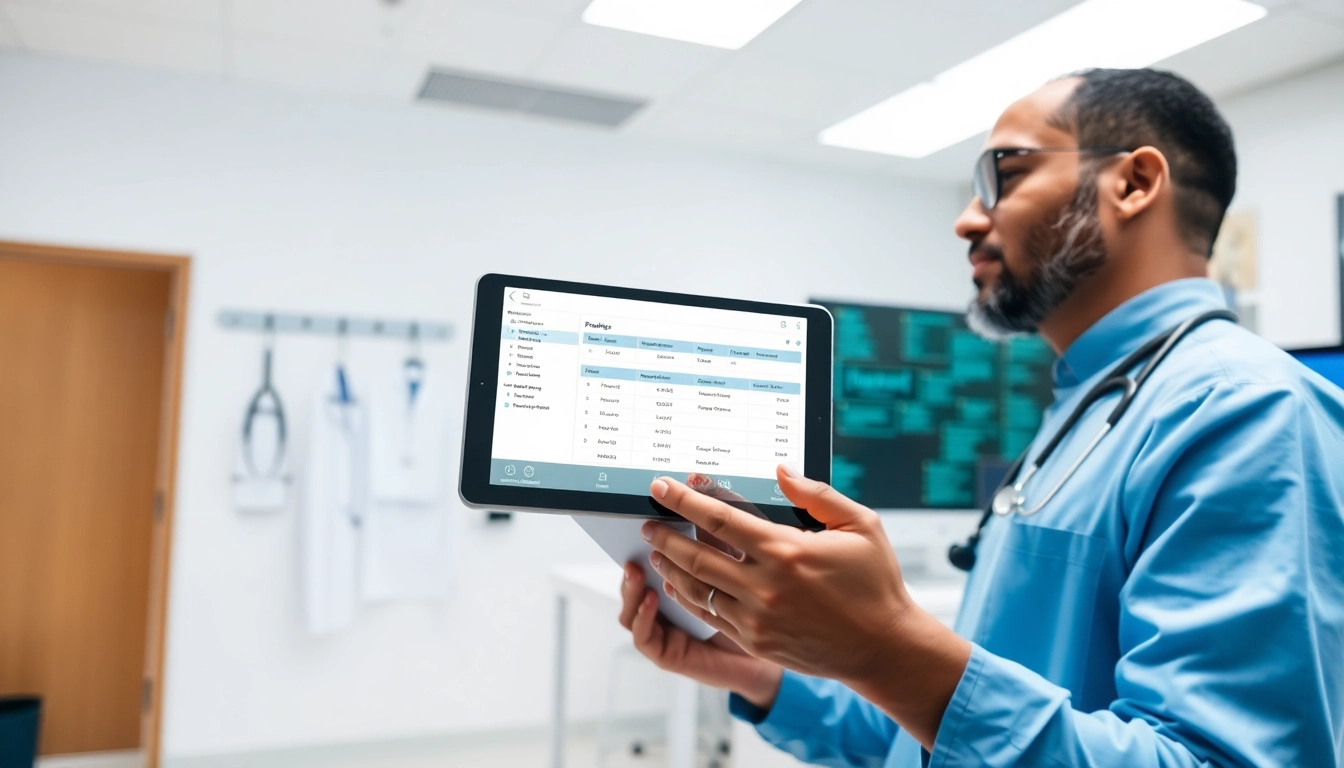Understanding Electronic Prescribing Systems
Definition and Overview of Electronic Prescribing Systems
Electronic prescribing systems, commonly referred to as e-prescribing or e-Rx, are technology-driven solutions that allow healthcare providers to create, send, and manage prescription orders digitally. Instead of relying on handwritten notes or phone calls to pharmacies, providers can electronically transmit prescriptions directly from their point of care. This enhances the accuracy and legibility of prescriptions, minimizing the chance of errors that can arise from miscommunication or illegible handwriting. Electronic prescribing systems not only streamline the prescribing process but also integrate various functionalities such as medication histories, insurance verification, and interactions with pharmacy databases, ultimately leading to improved patient safety and care.
History and Evolution of E-Prescribing
The roots of electronic prescribing can be traced back to the early 1990s when the first systems emerged primarily as standalone applications to assist providers in drafting prescriptions. Over the years, as technology advanced, so did the capabilities of these systems. By the late 2000s, legislation aimed at regulating healthcare technology prompted a significant push towards wider adoption of e-prescribing. This movement was not only technologically motivated but was also driven by regulatory incentives, including the Medicare Modernization Act, which encouraged e-prescribing among healthcare providers to improve patient outcomes.
In the years that followed, electronic prescribing systems began to incorporate advanced features such as direct integration with electronic health records (EHRs), medication reconciliation tools, and real-time eligibility checks. As of the present day, most healthcare practices in the U.S. utilize a form of electronic prescribing, reflecting its evolution from a novel technological solution to an industry standard for safety and efficiency in medication management.
Key Features of Electronic Prescribing Systems
Modern electronic prescribing systems boast a wide range of features designed to enhance the prescribing process. Some of the most notable features include:
- Real-Time Prescription Benefit Checks: This feature allows providers to verify a patient’s insurance coverage and any applicable co-pay information at the moment of prescribing, ensuring patients are aware of their medication costs instantly.
- Medication History Review: Providers can access a patient’s complete medication history to prevent adverse drug interactions and to ensure that prescriptions are necessary and appropriate.
- Automated Refills and Renewal Requests: E-prescribing systems can automate the refill process, helping to enhance medication adherence by ensuring patients receive timely renewals.
- Drug Interaction and Allergy Alerts: Integrated clinical decision support can alert providers to potential drug interactions or allergies at the point of care.
- EPCS Compliance: For the prescribing of controlled substances, systems typically comply with Drug Enforcement Administration (DEA) regulations, ensuring secure and compliant prescription handling.
Benefits of Electronic Prescribing Systems
Improving Prescription Accuracy and Reducing Errors
One of the most significant advantages of electronic prescribing systems is their capacity to improve prescription accuracy. By allowing healthcare providers to electronically send prescriptions, these systems eliminate many common errors associated with handwritten prescriptions, including illegibility and miscommunication. A study demonstrated that e-prescribing systems reduce medication errors by over 50% when integrated with clinical decision support systems. The ability for providers to quickly review a patient’s medication history further decreases the risk of harmful drug interactions and duplicate therapies.
Streamlining Workflow for Healthcare Providers
Electronic prescribing systems notably streamline workflows within healthcare settings. With the ability to send a prescription to a pharmacy with just a few clicks, healthcare providers can significantly reduce the time spent on administrative tasks related to medication management. This increased efficiency allows providers to dedicate more time to patient care rather than managing paperwork. Additionally, features such as automated refill requests streamline the follow-up process and reduce patient no-shows, contributing to better overall practice management.
Enhancing Patient Engagement and Safety
Patient engagement is vital for improved health outcomes, and electronic prescribing systems play a key role in facilitating this engagement. By providing patients with more accurate and timely information about their prescriptions, including costs and potential drug interactions, healthcare providers can empower patients to take an active role in their medication management. Moreover, the safety of patients is enhanced, as these systems help to catch potential errors before they reach the pharmacy, reducing the likelihood of adverse drug events and contributing to better patient outcomes.
Implementing Electronic Prescribing Systems
Choosing the Right E-Prescribing Solution
Selecting the right electronic prescribing solution requires careful consideration of several factors, including the size of the practice, existing infrastructure, budget constraints, and specific features needed. Practices should assess software vendor options, focusing on user-friendliness, customer support, as well as compliance with regulatory standards. Demonstrations and trial periods can provide insight into how well a system meets the unique needs of a practice.
Integrating with Existing Health Information Systems
Successful implementation of electronic prescribing systems also hinges on their ability to integrate seamlessly with existing health information systems, particularly electronic health records (EHRs). Ease of integration should be evaluated, as systems that work well with EHRs can streamline data sharing between providers and pharmacies, thereby enhancing workflow efficiency. Proper integration contributes to a more holistic view of patient data, further improving care coordination.
Training Staff for Successful Adoption
No matter how sophisticated an electronic prescribing system may be, proper training for staff is crucial for successful adoption. Training sessions should cover all functional areas of the system, including e-prescribing workflows, troubleshooting tips, pharmacy communication, and dealing with patient inquiries. Continuous education and feedback within the practice can promote greater comfort and competency with the system and encourage staff to embrace this technological shift.
Challenges in Electronic Prescribing Systems
Addressing Compliance and Regulatory Issues
Compliance represents a significant challenge when implementing electronic prescribing systems. Healthcare providers need to be aware of various regulations that may affect their e-prescribing capabilities, especially concerning the prescribing of controlled substances. Ensuring that the e-prescribing solution complies with regulatory requirements such as the DEA’s EPCS regulations is vital. Regular audits and updates are required to maintain compliance and avoid potentially costly penalties.
Managing Data Security and Patient Privacy
Data security is a primary concern in the healthcare sector, particularly with the rise of electronic prescribing systems. Protecting patient confidentiality must be a top priority for practices adopting these systems. Healthcare providers should implement robust security measures, such as encryption and access controls, to safeguard sensitive health data. Additionally, regular security assessments and staff training on data privacy protocols are essential to mitigate the risks of data breaches and potential non-compliance penalties.
Tackling Resistance to Change in Healthcare Settings
Resistance to change can be a significant barrier to the successful implementation of electronic prescribing systems. Some staff members may be hesitant to adopt new technology due to concerns about usability or workflow disruptions. To overcome this hurdle, management should foster a culture of open communication and transparency regarding the benefits of e-prescribing. Highlighting success stories, providing comprehensive training, and engaging staff in the implementation process can facilitate a smoother transition to new technology.
Measuring Success with Electronic Prescribing Systems
Key Performance Indicators (KPIs) to Monitor
To assess the effectiveness of electronic prescribing systems, it is essential for practices to identify and monitor key performance indicators (KPIs) such as:
- Prescription Error Rates: Evaluating the rate of prescription errors pre- and post-implementation of the e-prescribing system can help quantify improvements in accuracy.
- Prescription Processing Time: Recording time saved in processing prescriptions can demonstrate the efficiency gains from using electronic systems.
- Patient Satisfaction Scores: Gathering feedback from patients regarding their e-prescribing experience can provide valuable insights into how well the system is meeting their needs.
- Medication Adherence Rates: Examining changes in patient adherence to prescribed medications can indicate how effectively the system supports patient care.
Feedback Mechanisms for Continuous Improvement
Establishing feedback mechanisms is crucial for continuous improvement in the use of electronic prescribing systems. Regular surveys of staff users and patients can identify areas for enhancement and inform future training initiatives. Additionally, fostering an environment where employees feel comfortable voicing concerns about the system encourages proactive problem-solving.
Case Studies: Success Stories in E-Prescribing
Numerous healthcare providers have successfully implemented electronic prescribing systems to enhance patient care and streamline workflows. For example, a large multispecialty clinic reported a 40% reduction in medication errors following the implementation of an e-prescribing system. Case studies like these provide strong evidence of the potential benefits of adopting electronic prescribing technologies and can serve as motivational benchmarks for other practices considering similar solutions.



